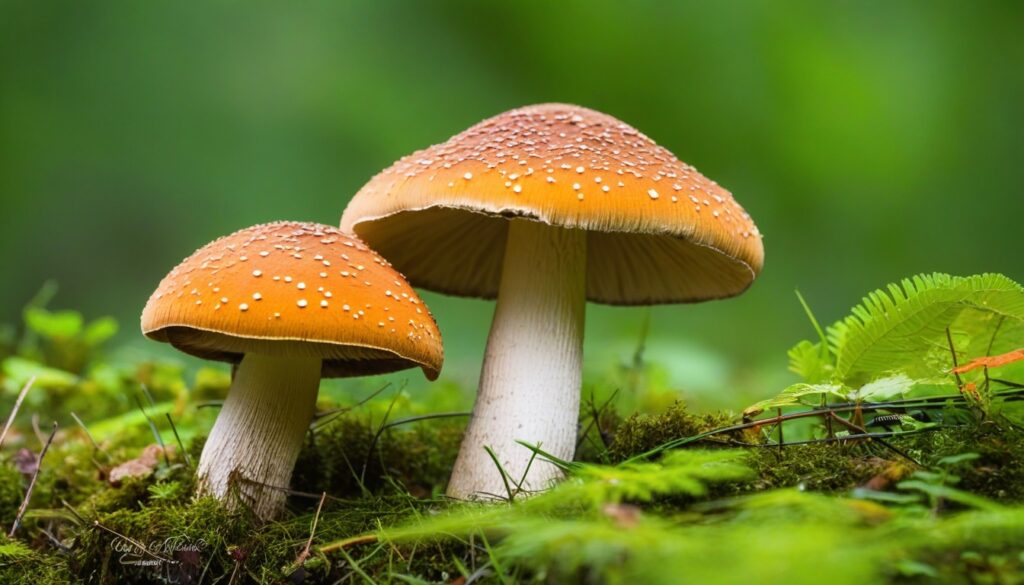Welcome to the ultimate guide to foraging for edible wild mushrooms in the beautiful state of Missouri. Whether you’re a seasoned forager or a beginner eager to explore, this comprehensive guide is here to equip you with all the information you need to embark on your mushroom adventure safely and sustainably. From identifying edible species to cooking and preserving your finds, we’ve got you covered. So put on your hiking boots, grab your basket, and let’s dive into the fascinating world of wild mushrooms.
Key Takeaways
- Learn how to identify edible mushrooms in Missouri’s forests.
- Understand sustainable foraging practices to ensure you don’t harm the environment.
- Discover delicious mushroom recipes and preservation methods.
- Find out about the medicinal and health benefits of certain mushroom species.
- Familiarize yourself with Missouri’s mushroom foraging regulations and local resources.
Getting Started with Foraging
Foraging for mushrooms can be both exciting and rewarding, but before setting out on your mushroom hunting adventure in Missouri, it’s important to understand the basics. Whether you’re a beginner forager or have some experience, this section will cover the fundamental aspects of mushroom foraging, including the necessary tools, safety precautions, and tips for identifying edible mushrooms in the wild.
Tools for Mushroom Foraging
Before heading out, there are a few essential tools that you’ll need to make the most out of your mushroom foraging experience:
- A basket or bag to carry your harvested mushrooms
- A mushroom knife or brush to cut or clean the mushrooms
- A field guide to help with identification
- A compass or map to help guide you in the wilderness
It’s also a good idea to wear appropriate clothing and footwear and bring along some water and snacks in case you get lost or end up staying longer than anticipated.
Safety Precautions
While mushroom foraging can be fun, it’s important to take some safety precautions to avoid any accidents or illness:
- Only pick mushrooms that you can confidently identify as safe to eat
- Avoid areas that may have been contaminated by pollution or pesticides
- Wear gloves when handling mushrooms to prevent skin irritation or allergic reaction
- Do not eat wild mushrooms raw, always cook them thoroughly
- Notify someone of your whereabouts before heading out and bring along a charged phone for emergency purposes
Identifying Edible Mushrooms
Identifying edible mushrooms can be challenging, but with a bit of practice and knowledge, it becomes easier over time. Here are some tips to help you positively identify edible mushrooms:
- Get familiar with the most common edible mushroom species in Missouri by studying field guides and reference books
- Pay attention to the color, shape, and size of the mushroom cap, stem, gills, and spores
- Smell and taste only a tiny bit of the mushroom to confirm its identity (if you’re not sure about the edibility, do not attempt to taste or consume the mushroom)
- Consult with experienced foragers or expert mycologists when in doubt
Now that you’re equipped with the essential knowledge and tools needed to get started with mushroom foraging, you’re ready to hit the Missouri woodlands and begin your mushroom hunting adventure.
Common Edible Mushroom Species in Missouri
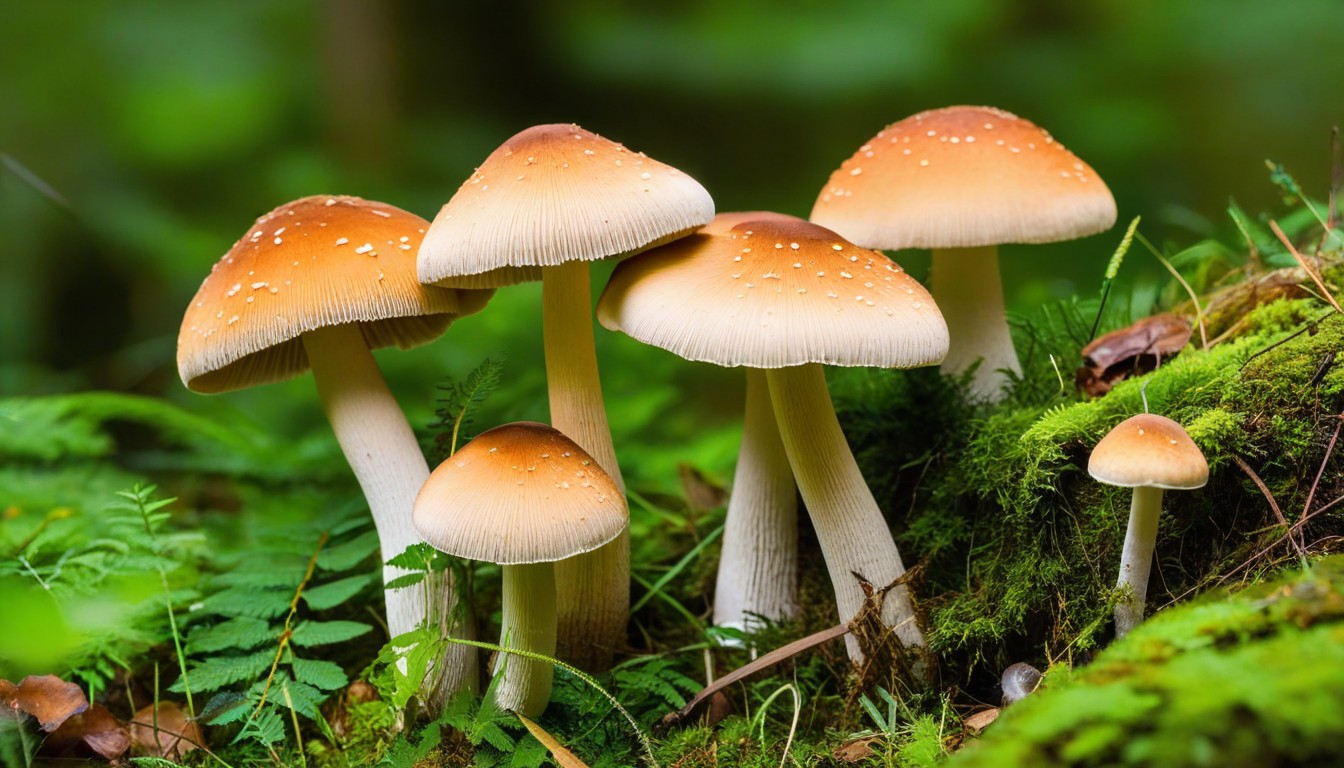
Missouri is a forager’s paradise when it comes to edible mushroom species. Here are some of the most popular wild mushrooms you’re likely to encounter while venturing through the state’s woodlands.
|
Mushroom Species |
Description |
When to Find |
Where to Find |
|---|---|---|---|
|
Morel (Morchella spp.) |
Distinctly cone-shaped cap with a honeycomb-like texture, ranging in color from yellow to brown. Nutty, earthy flavor. |
Spring, typically late March to early May |
Found near trees, particularly ash, elm, and apple. |
|
Chanterelle (Cantharellus spp.) |
Trumpet-shaped cap with a wavy edge, ranging in color from yellow to orange. Fruity, peppery flavor. |
Summer to fall, typically mid-June through November |
Found in the leaf litter near trees, particularly oak and birch. |
|
Oyster (Pleurotus spp.) |
Shell-shaped cap, ranging in color from gray to light brown. Mild, nutty flavor. |
Spring to fall, typically April through November |
Found on dead and dying trees, particularly oak and maple. |
|
Hedgehog (Hydnum spp.) |
Spiky cap with a white underside, ranging in color from beige to orange. Sweet, nutty flavor. |
Summer to fall, typically August through October |
Found in the leaf litter near trees, particularly oak and beech. |
|
Lion’s Mane (Hericium spp.) |
Globe-shaped, white, shaggy cap. Mild, slightly sweet flavor reminiscent of lobster or crab. |
Summer to fall, typically July through November |
Found on dead and dying trees, particularly oak and maple. |
Keep in mind that mushroom identification can be difficult, and it’s important to be absolutely certain of a mushroom’s edibility before consuming it. Always consult with an expert or guidebook if you’re unsure about a particular species.
Sustainable Foraging Practices
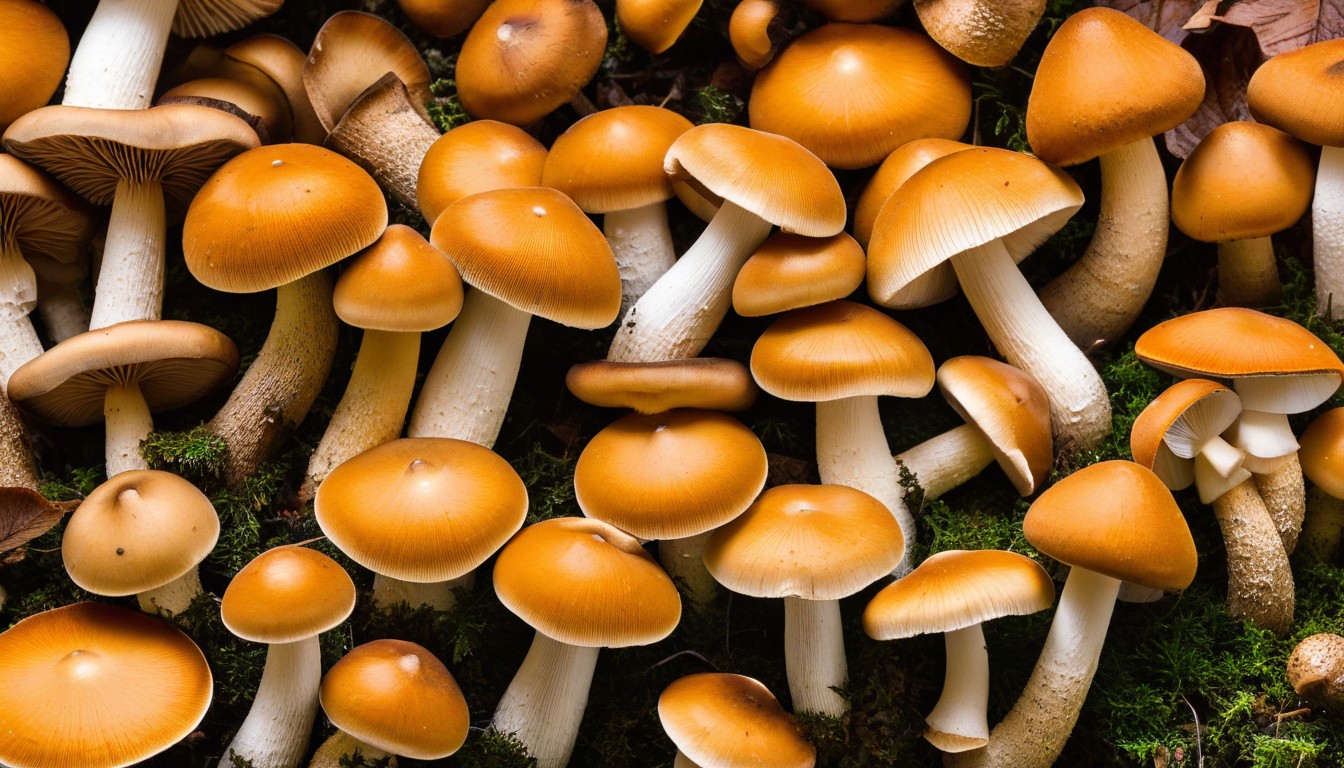
Foraging for wild mushrooms is an enjoyable and rewarding activity. However, it’s essential to understand the importance of sustainable practices to ensure the continued growth and flourishing of the mushrooms we forage. Sustainable foraging means that we protect and preserve the environment, while also harvesting mushrooms without depleting their population or harming the area in which they grow.
Ethical foraging is the perfect example of sustainable practices in mushroom foraging. It involves following specific guidelines and principles that promote good stewardship, respect, and compassion towards nature while also acknowledging the role that mushrooms play in the ecosystem.
Here are some guidelines for sustainable and ethical foraging:
- Respect the ecosystem and the environment by not picking any mushrooms that are endangered or growing in an unhealthy environment.
- Know and follow all the local regulations and restrictions for collecting mushrooms.
- Harvest only mushrooms that you can positively identify as edible and leave any ambiguous ones behind.
- Make sure to leave plenty of mushrooms behind to ensure their reproduction and sustainability.
- Do not take more than you need, considerate of the fact that other animals depend on mushrooms for food and habitat.
Another practice that contributes to sustainable foraging is mushroom conservation. When you forage mushrooms, it’s equally important not to damage or disturb the environment where they grow. Mushroom habitats need to be protected from unnecessary disturbance. It is imperative to preserve the microhabitats where they thrive, as well as the overall ecosystems in the surrounding areas in which they exist.
|
Benefits of sustainable and ethical foraging include: |
|---|
|
It maintains the natural habitat and environment and does not cause harm to the ecosystem. |
|
It ensures the sustainability and survival of the harvested mushroom populations and their ecosystems. |
|
It contributes to conservation efforts, preventing over-harvesting and preserving natural habitats for future generations. |
|
It promotes good stewardship and a deep respect for the natural world, reaffirming the essential role that ecological systems and biodiversity play in sustaining human communities. |
By following sustainable foraging practices, we can ensure the continued availability of wild mushrooms in Missouri for generations to come. These practices also promote a deeper respect and appreciation for the environment and the important role it plays in sustaining all life on Earth.
Poisonous Mushrooms to Avoid
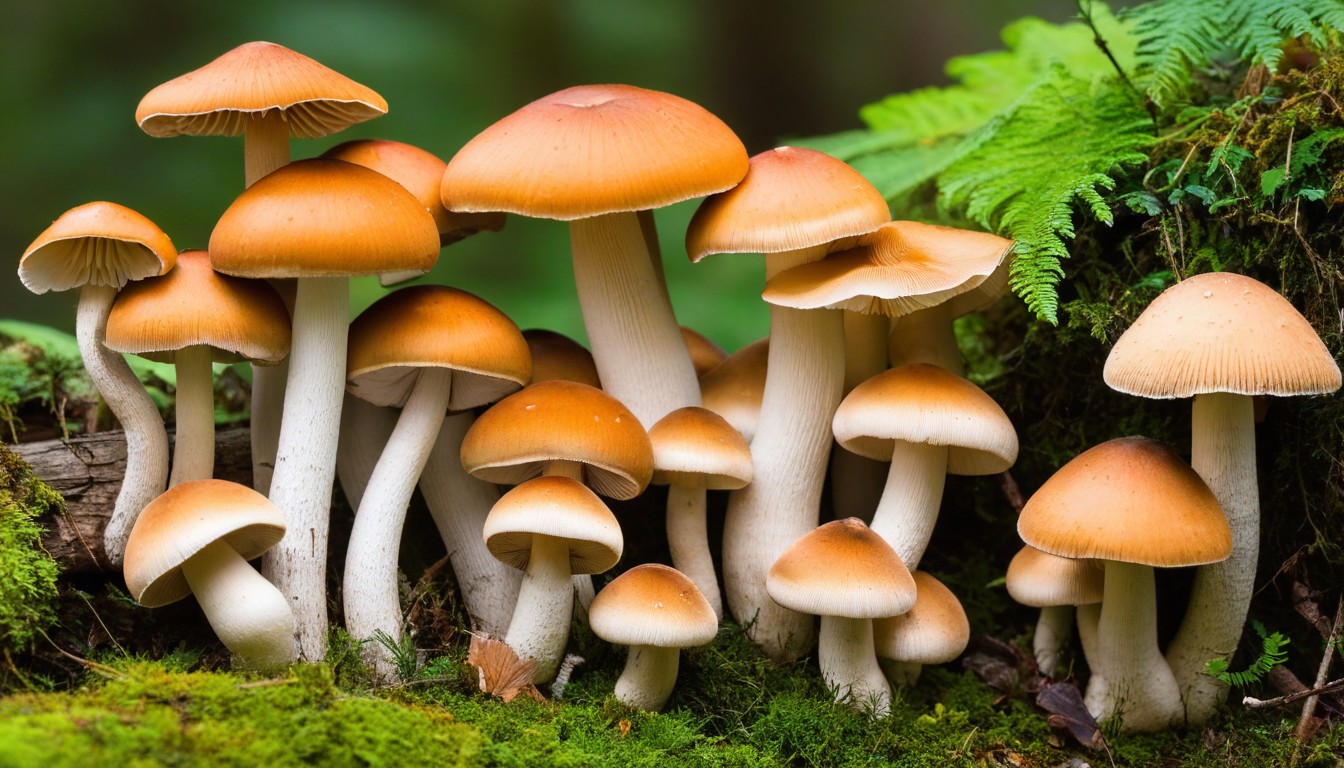
While exploring the world of wild mushrooms in Missouri, it’s essential to exercise caution and avoid toxic species. Ingesting poisonous mushrooms can lead to severe health complications, and in some cases, even death. Here are some of the most common toxic mushrooms found in Missouri:
|
Mushroom Name |
Description |
|---|---|
|
Death cap (Amanita phalloides) |
A deadly mushroom with a pale cap and white gills. Often found near oak trees. |
|
Destroying angel (Amanita bisporigera) |
An all-white mushroom with a white stem and gills. Highly toxic and can be fatal if ingested. |
|
Galerina (Galerina marginata) |
A small, brown mushroom with a conical cap. Harmful if consumed and often mistaken for edible mushrooms. |
To avoid mushroom poisoning, it’s crucial to be able to distinguish between edible and toxic mushrooms accurately. If you’re a beginner forager, it’s best to forage with an experienced guide or take a course on mushroom identification. Additionally, always cook mushrooms thoroughly to break down any harmful compounds that may be present.
Cooking and Preserving Wild Mushrooms
After a successful foraging expedition, it’s time to put those freshly picked mushrooms to use!
When cooking wild mushrooms, it’s important to enhance, rather than overpower, their natural flavors. Some popular techniques include sautéing with butter and garlic, roasting with herbs and olive oil, or incorporating into hearty soups and stews.
For inspiration, here are some of our favorite mushroom recipes:
|
Recipe Name |
Description |
|---|---|
|
Wild Mushroom Risotto |
This creamy rice dish combines a variety of wild mushrooms, grated Parmesan, and Arborio rice. |
|
Grilled Portobello Mushroom Burgers |
Marinated in balsamic vinegar and soy sauce, these meaty mushroom burgers are the perfect vegetarian alternative. |
|
Mushroom and Thyme Ragout |
This French-inspired stew features earthy mushrooms, tender baby potatoes, and fresh thyme. |
If you can’t use all of your foraged mushrooms right away, there are several preservation methods to make them last longer. Some options include drying, freezing, pickling, or canning. Just be sure to follow proper food safety guidelines and store them in a cool, dry place.
Happy cooking and preserving!
Medicinal and Health Benefits of Wild Mushrooms
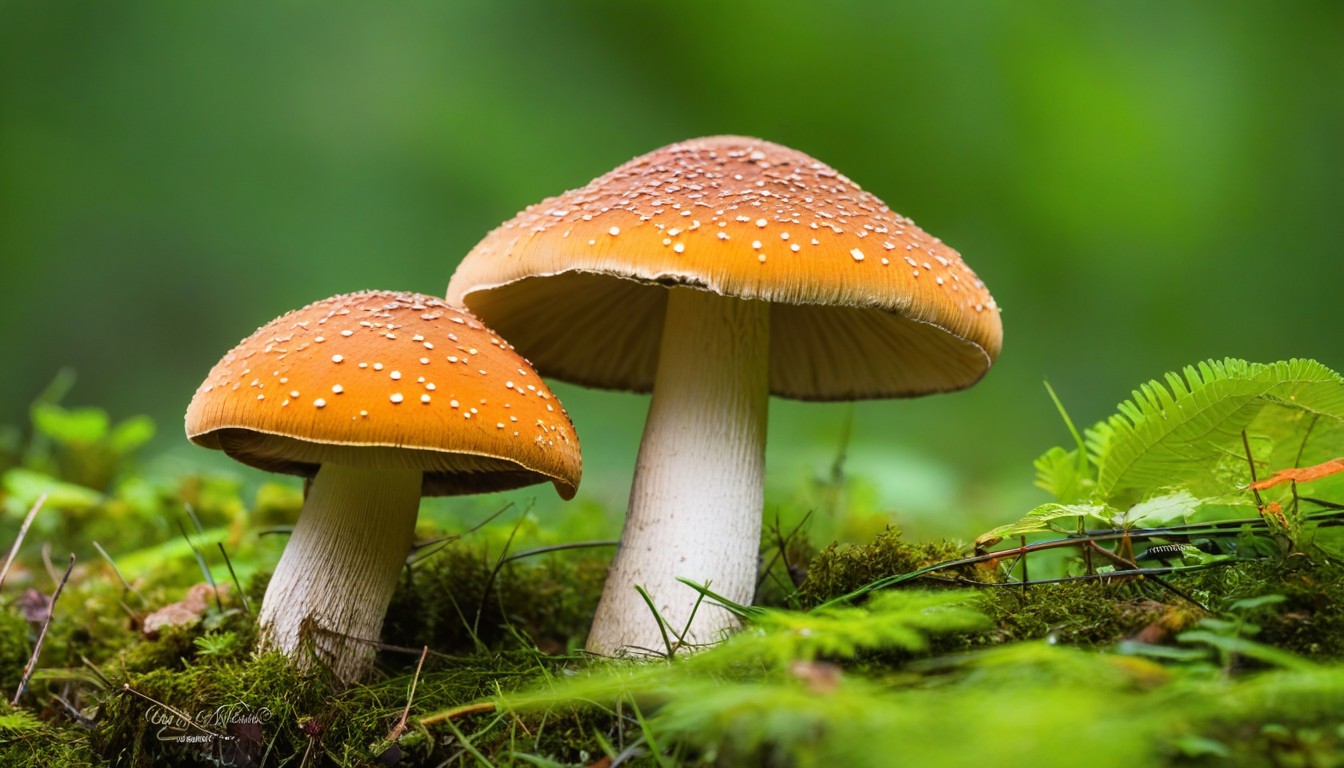
Besides being a culinary delight, Missouri’s wild mushrooms also offer a plethora of medicinal and health benefits. Here are some of the mushroom species found in Missouri and their potential therapeutic uses:
|
Mushroom Species |
Health Benefits |
|---|---|
|
Reishi |
Boosts immune system, reduces inflammation |
|
Lion’s Mane |
Enhances cognitive function, may reduce anxiety and depression |
|
Maitake |
Regulates blood sugar levels, improves heart health |
|
Chaga |
Powerful antioxidant, may reduce inflammation and improve immune function |
It’s important to note that more research is needed to fully understand the medicinal properties of these mushrooms. Consult with a healthcare professional before using any mushroom species for medicinal purposes.
Additionally, incorporating wild mushrooms into your diet may have general health benefits due to their high nutrient content. Edible wild mushrooms are low in calories and high in protein, fiber, and vitamins and minerals such as vitamin B, selenium, and potassium.
Overall, Missouri’s fungi offer a world of health and wellness possibilities beyond their delicious taste.
Mushroom Foraging Regulations in Missouri
Exploring the fascinating world of edible wild mushrooms in Missouri requires adequate knowledge of laws and regulations surrounding foraging. It’s essential to be familiar with the local regulations to avoid breaking the law and possibly causing harm to the environment.
According to the state’s Department of Conservation, foragers who plan to pick mushrooms on conservation lands must obtain a Special Use Permit. The permit is free and can be obtained on the department’s website.
While it’s legal to forage in Missouri’s national forests, the United States Forest Service prohibits the commercial harvest of mushrooms without a permit. Moreover, the use of rakes, shovels, or other digging tools is illegal, as it can damage the forest floor and its ecosystem. Mushroom enthusiasts are advised to strictly follow leave no trace principles to preserve the environment.
Summary of Mushroom Foraging Regulations in Missouri:
|
Location |
Permit/Law |
|---|---|
|
Conservation lands |
Special Use Permit required |
|
National forests |
No commercial harvest without a permit, no digging tools allowed |
By following these regulations, mushroom foragers can enjoy a fun and safe experience without breaking the law or causing harm to the environment.
Foraging Resources and Organizations in Missouri
Foraging for edible mushrooms can be fun, relaxing, and rewarding for individuals and families. If you’re interested in learning more about mushroom foraging and connecting with fellow foragers in Missouri, be sure to check out these resources and organizations:
Missouri Mycological Society (MMS)
The Missouri Mycological Society (MMS) is a non-profit organization dedicated to promoting the study and enjoyment of fungi in Missouri and surrounding areas. The society hosts regular meetings, forays, and educational events for members and guests of all skill levels. Whether you’re a seasoned forager or a beginner, the MMS welcomes anyone with an interest in mushrooms and fungi.
To learn more about the MMS and how to join, visit their website at: momyco.org
Ozark Regional Mushroom Initiative (ORMI)
The Ozark Regional Mushroom Initiative (ORMI) is a collaborative project between the Missouri Department of Agriculture and the Growing American Ag. Foundation. ORMI’s mission is to promote sustainable and responsible mushroom cultivation and foraging practices in the Ozarks region, including Missouri. The initiative offers workshops, field days, and resources for mushroom enthusiasts and growers.
To learn more about ORMI, visit their website at: ozarkmushrooms.org
Missouri Department of Conservation (MDC)
The Missouri Department of Conservation (MDC) offers a wealth of resources, including publications, online guides, and in-person workshops, on a variety of topics related to nature and wildlife in Missouri. The MDC also provides information on foraging regulations, licenses, and permits for mushroom hunters.
Visit the MDC’s website at: mdc.mo.gov to explore their mushroom foraging resources and other programs.
Missouri Foraging and Wild Edibles (Facebook Group)
If you’re interested in connecting with other Missouri foragers and sharing tips and information on mushroom hunting and other wild edibles, consider joining the Missouri Foraging and Wild Edibles Facebook group. The group is open to anyone with an interest in foraging and offers a supportive community for learning and sharing knowledge.
Search for “Missouri Foraging and Wild Edibles” on Facebook to find and join the group.
Conclusion
With its diverse range of edible wild mushrooms, Missouri is a forager’s paradise. From the novice to the seasoned expert, this article provides a comprehensive guide to help you explore the fascinating world of mushroom foraging in Missouri. Remember to follow ethical and sustainable foraging practices, stay safe by distinguishing between poisonous and edible species, and savor the flavors of your foraged treasures with various cooking techniques and preservation methods.
By venturing out into the beautiful woodlands with this guide in hand, you’re sure to embark on an exciting mushroom adventure in the heart of Missouri’s natural wonders. Happy foraging!
FAQ
What tools do I need for mushroom foraging?
For mushroom foraging, you’ll need a few essential tools. These include a basket or a mesh bag to collect mushrooms, a knife for cutting the stems, a small brush to clean off dirt, and a field guide or smartphone app for mushroom identification.
How can I stay safe while mushroom foraging?
Safety is crucial when foraging for mushrooms. Always wear appropriate clothing and footwear, be aware of your surroundings, and avoid consuming mushrooms unless you are certain of their identification. It is also recommended to consult a mushroom expert or join a local foraging group for guidance and support.
Are there any edible mushrooms that look similar to poisonous ones?
Yes, there are several edible mushrooms that resemble toxic species. It is essential to thoroughly educate yourself on mushroom identification, paying close attention to key characteristics such as color, texture, smell, and spore print. When in doubt, always err on the side of caution and consult an expert.
Can I sell the wild mushrooms I forage?
In Missouri, it is against the law to sell wild mushrooms unless you have a valid permit. For commercial mushroom foraging, it is advisable to research and comply with the specific regulations and licensing requirements in your area.
How should I store the mushrooms I gather?
To prolong the freshness of your foraged mushrooms, it is recommended to store them in a paper bag or a breathable container in the refrigerator. Avoid using plastic bags, as they can cause moisture buildup and lead to spoilage. Remember to clean and inspect the mushrooms before storing them.
Can I forage mushrooms in state parks or conservation areas?
Mushroom foraging regulations may vary in different state parks and conservation areas in Missouri. It is important to check the specific rules and obtain any necessary permits or permissions before engaging in foraging activities. Respect the natural environment and be mindful of any signage or guidelines provided.
Are there any poisonous mushrooms that are deadly if consumed?
Yes, there are some deadly poisonous mushrooms that can be fatal if ingested. It is crucial to have a thorough understanding of poisonous mushroom species and their distinctive features to avoid any potential health risks. Never consume any wild mushrooms unless you are absolutely sure of their edibility.
Are there any mushroom foraging clubs or groups in Missouri?
Yes, Missouri has several mushroom foraging clubs and groups that provide opportunities for enthusiasts to connect, learn, and share their knowledge. These organizations often organize forays, workshops, and educational events. Check local directories or online resources to find a club or group near you.
Can I forage mushrooms on private property?
Foraging mushrooms on private property requires the permission of the landowner. It is essential to obtain explicit consent before engaging in any foraging activities on private lands. Trespassing without permission is both illegal and unethical.
Can I freeze mushrooms for long-term storage?
Yes, freezing mushrooms is an effective method for long-term storage. Before freezing, it is recommended to blanch the mushrooms briefly to preserve their texture. Once blanched, spread the mushrooms on a baking sheet to freeze individually, then transfer them to a freezer-safe container or bag for storage.

